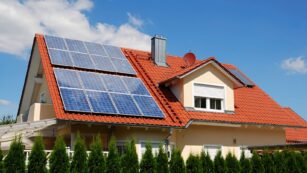
Nowadays, it seems like everything is getting more expensive. Inflation is reaching heights not seen in decades, and everyone is feeling the pinch. This is especially true when it comes to the necessities of life, such as food. We can’t live without it, yet the cost is driving more and more people to eat less or find new ways to nourish themselves.
Growing your own food is a wonderful way to save money, help the environment, and eat healthier. The more people who grow their own food, the less food has to be shipped around the country. This benefits the environment and can help stabilize or lower gas prices. You know that what you grow in your garden will be free of toxic pesticides that large farms and conglomerates use. Everything from your garden will be healthy, nourishing, and grown safely. Here is everything you need to grow your own food.
A Plot
To start with, you will need a bit of land on which you can create your garden. It doesn’t have to be a lot, but you’ll need enough space to grow all of the food you want to grow, plus have some space between rows. For some, this will mean having a small space sectioned off in the yard. For others, this means having a large plot of land for farming. Whatever you want, make sure you have enough space to do it. The soil must also be appropriate for your purposes. Not all soil is equal, and you will want to have yours tested to make sure that it has all the nutrients you need to grow your garden or farm.
A Plan
Start by deciding what you want to grow in the space provided. Once you know, you can start planning how you want your growing area to be laid out and how you want to manage the growing season.
You must also take into account that some plants may be able to flourish if they are too close to others. Finally, make sure that you also plan out when you have to start preparing the plot, planting the seeds, and harvesting. If you don’t have it planned out in advance, you could find yourself rushing to get everything done so you can get things in the ground.

Equipment
No matter how much food you want to grow, you will need equipment to help you get the job done. For large farm plots, you might need a tractor with attachments for tilling and digging, along with large hoses and sprinklers to keep everything properly watered. To keep protected from the sun, you may want a John Deere tractor canopy to keep in the shade on those long days in the field.
Smaller gardens will also need equipment and tools. Make sure you have a rototiller to turn the soil every year and mix the nutrients. A weeder may also be needed if your plot has not been maintained in a while and requires cleaning up. There’s no need to hurt your back if you don’t have it. Finally, a rake is a garden essential to keep the soil around your plants tidy and keep the nutrients in the soil moving.
Something to Sow
The most important thing that you will need is something to grow. There are so many options, and what you choose will be up to you. You can also choose whether to plant seeds or bulbs. On the Survival Garden Seeds website, you can find natural seeds for every plant. In colder climates, you may want to start growing things in pots indoors and then transferring them outside when the temperature is appropriate.
If you are new to growing your own food, then starter plants are often the best way. You can easily transplant them directly into the soil and have a head start on growing them.

Access to Water
A garden won’t grow without water, even if you get a few rain storms yearly. This is especially true in the summer when the heat can be stifling. Plants need the nourishment of water, and the cooling effects, too. You will have to water them regularly, so either make sure you have a hose that can reach them or set up a sprinkler system on a timer to get the job done. Your entire plot should be watered thoroughly and evenly.
A sprinkler system will be the most efficient way to water your crop if you have a large, farm-sized plot. A small backyard garden can be watered by hand in only a few minutes every few days.
There are so many benefits to growing your own food. You can save money, and it’s another step towards living a life off the grid and free from the constraints of commercial systems. Plus, it’s fun and a great way to be active. On top of all that, you can be satisfied knowing exactly where your food has come from and that you have done the work to make it a reality. Just make sure that you have everything you need to get started.












